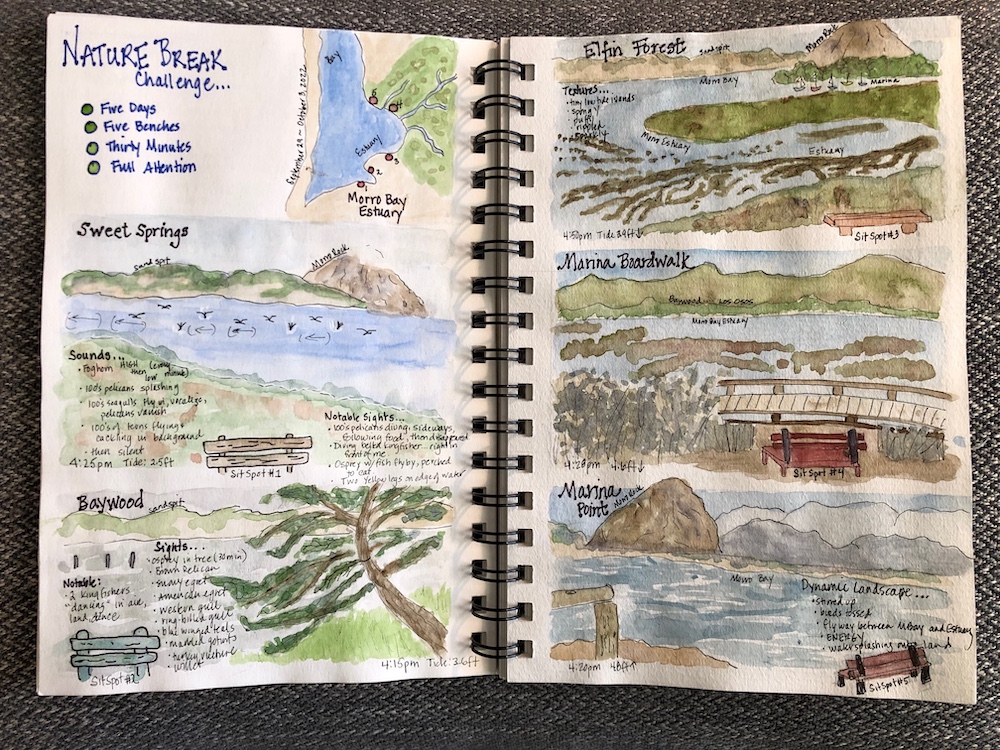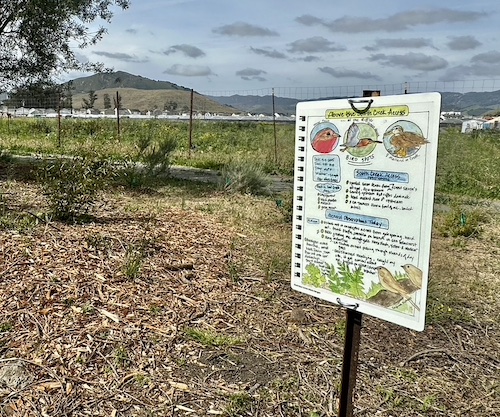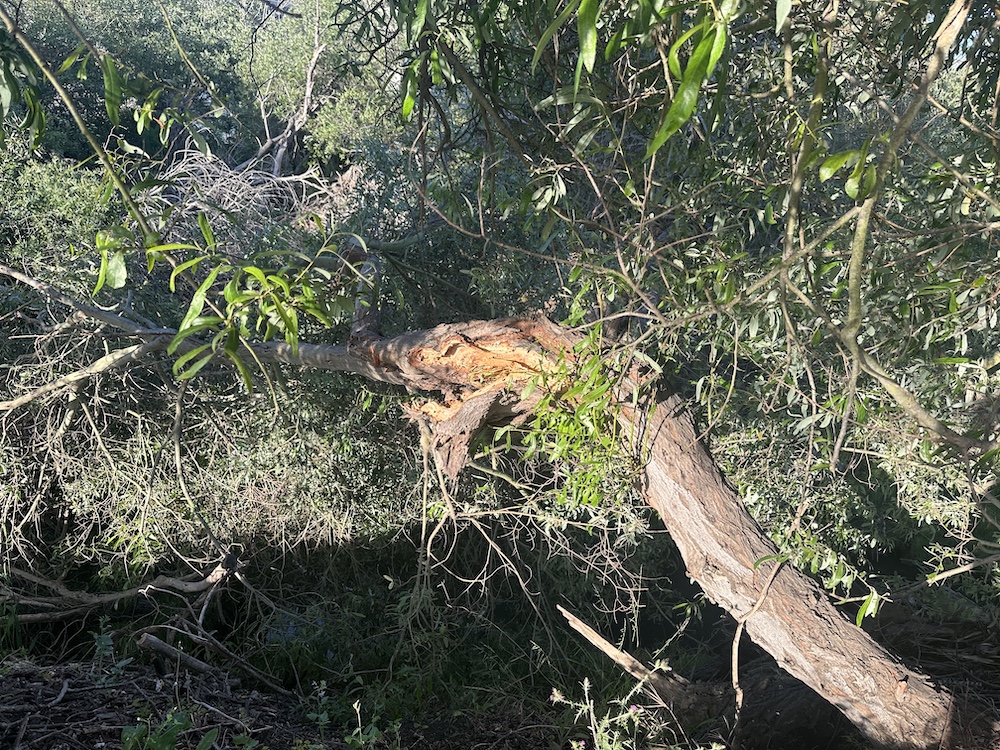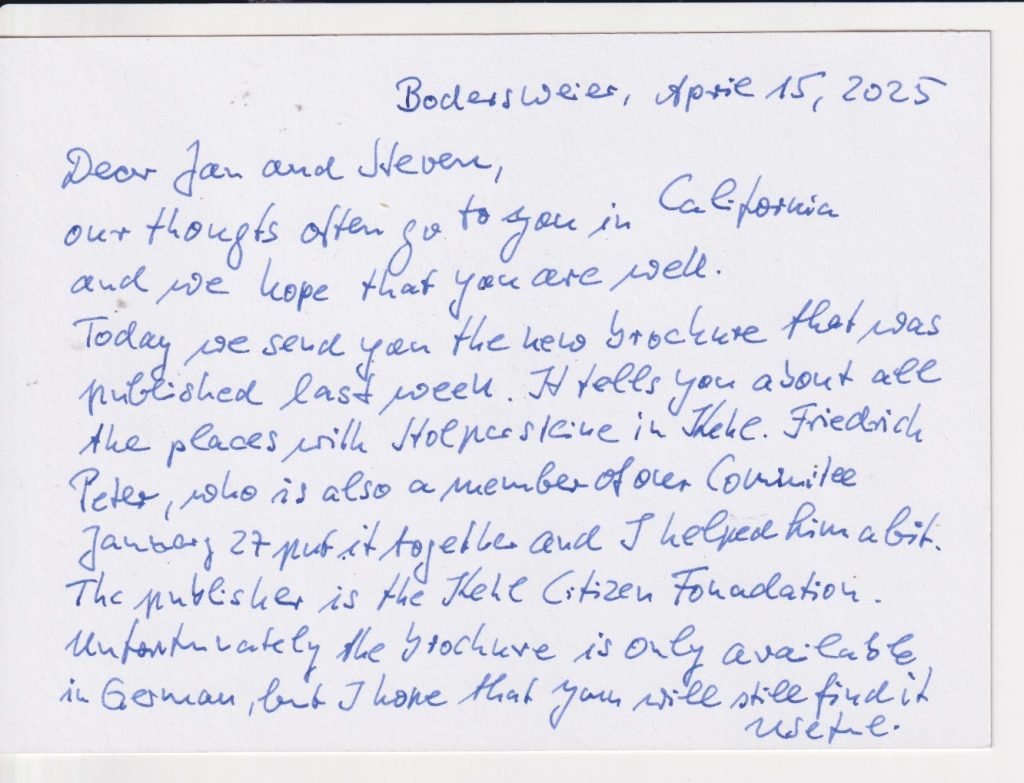Signs
Saturday, May 31st, 2025My lead guide in this difficult transition has been Ann Marie. We met as fellow members of the White Heron Sangha, a meditation group I’d belonged to for ten years where I’d regularly given “dharma talks” requiring reading and writing preparation that provided some continuity with my previous professional activity. A fellow Cal Poly faculty retiree and environmental educator, she’d served as Secretary for the Board at City Farm SLO and then stepped down to free time for her growing responsibilities in a national organization devoted to Nature Journaling around the time I shifted involvement with the Farm to the Creek Project.
One day she came as a guest presenter to the twice-weekly Pacific Beach Continuation High School Ecology class I was co-teaching at the Creek with Deannie, the official science instructor. Anne-Marie brought along little pen, paper and water color kits for each student:

and within the 40 minutes available, got most of them to produce a creditable page recording their observations at the site–to their own and their teachers’ amazement.



Greater amazement was elicited by examples from her journals she laid out on the picnic table.



I was entranced with the lushly colored sketches, the calligraphy, the varying page layouts, the scientific precision of their visual and verbal descriptions, and even more by the immediacy of the moment captured in their quick strokes, complementing their recording of location, time, date, season and weather. Hesitantly I asked if I could photograph some of those pages for more time to absorb their rich feast of information. When the class ended I invited her to walk the trails I’d constructed over the last year with the help of College Corps student volunteers.
A few weeks later she returned for another workshop with students. She was carrying binoculars and said she’d like to do some of her own journaling along the creek. I was thrilled to find another person intrigued enough by my pet spot hidden in a canyon just below the shopping center and car dealerships on the opposite bank to want to linger there. An hour later she emerged from the bush and said she was thinking of returning periodically on Friday mornings for more.
On one of those Fridays she showed me the pages she’d created so far. They included new names for familiar places, drawings of birds and plants I’d seen and not seen, stories of fleeting animal dramas and slow vegetational changes revealed through fresh eyes.





These were signs I’d been waiting for. The original grant proposal for the Creek Project included installation of informational guideposts to engage visitors with natural and historical features of the site. But the institutional formality of earlier samples to me had the opposite effect. These journal pages’ combination of artistry, information and immediacy could open hidden treasures of the place to newcomers.
Once again, I hesitantly asked if she would consent to such a use and received a wary affirmative response. The originals would have to be scanned professionally, reproduced on weather-resistant boards, and mounted on t-posts. With the help of our supportive printer at UPS, the hardware expert at Miner’s and my grandson apprentice, they took their place.






